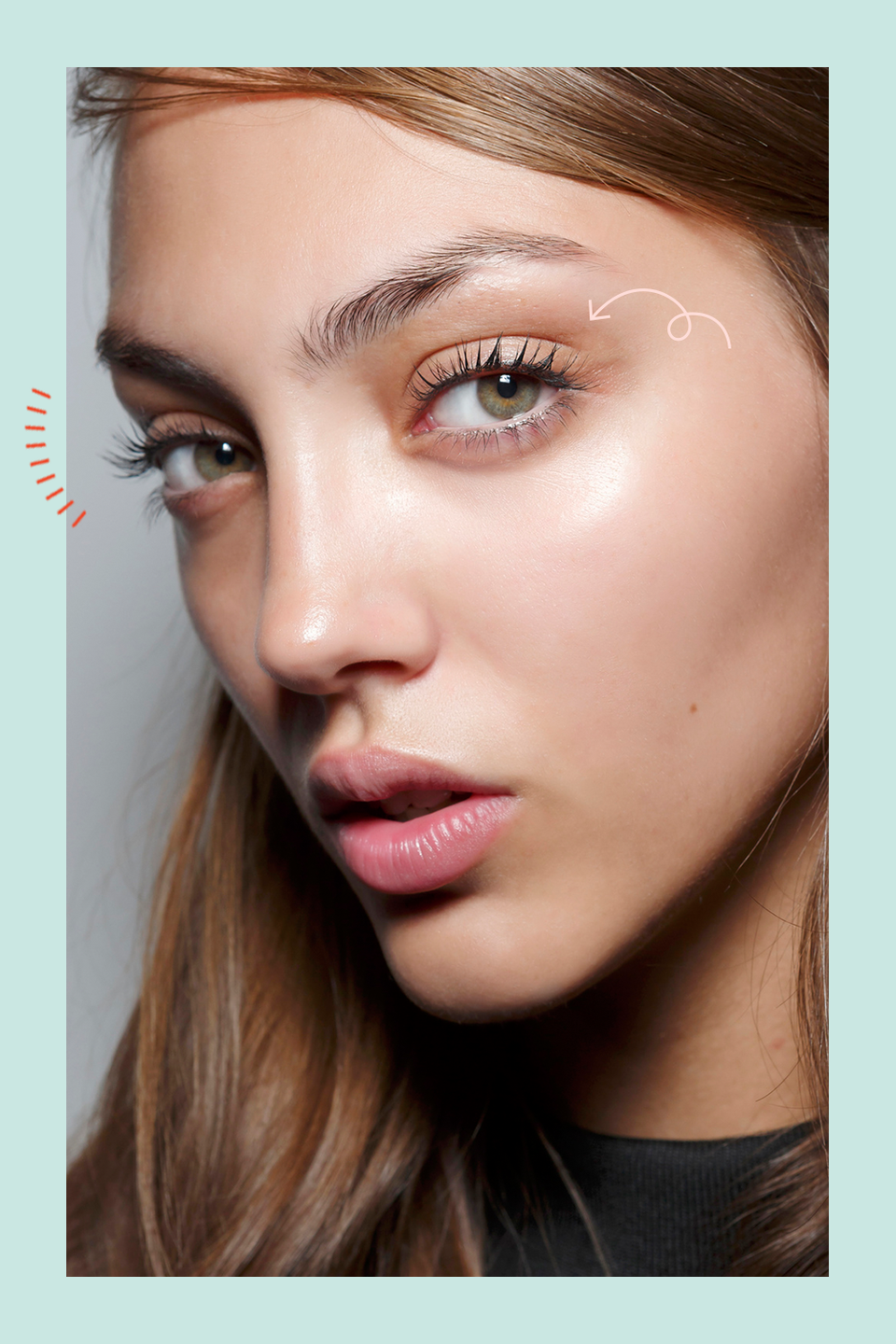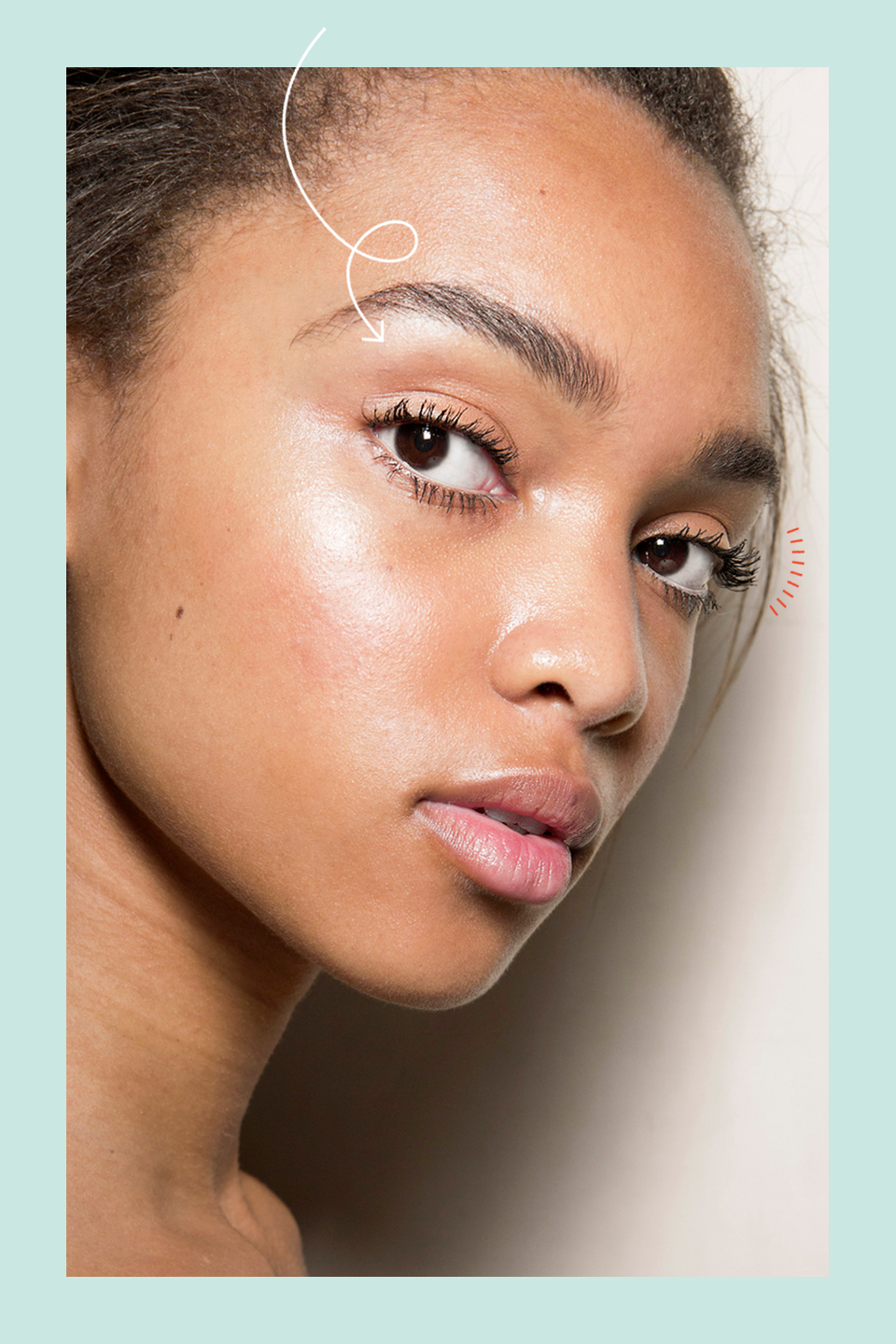How to Grow Your Eyelashes Really, Really, *Really* Long

If you weren't born with magically long eyelashes, then you know that sometimes even the thickest, most volumizing of mascaras can still leave your lashes looking a little sad and stubby. And if you’ve already tried all the long-lash alternatives (see: eyelash extensions, lash lifts, falsies, the works), you may be ready to get to the literal ~root~ of your problem and figure out how to grow your lashes, not just fake the length.
And that's why I'm here. Because there’s actually a whole world of serums and conditioners that help hydrate, enhance, and even lengthen your eyelashes—you just gotta know which ingredients actually work (remember, we are talking about your freakin' eyes, after all). And to help you out, I got Ilyse Haberman, MD, assistant professor of ophthalmology at NYU Langone, to break down everything you need to know about growing your eyelashes safely (including the sh*t you’ll definitely want to avoid).
What helps your eyelashes grow?

Before we get into the nitty-gritty of how to get extra-long eyelashes, let’s revisit the basics that you probably never even learned, k? The growth cycle of your eyelashes consists of three phases: catagen (the dormant stage, where your lashes just chill), telogen (the shedding stage, where your lashes naturally fall out), and anagen (the growth phase, where they, you know, grow).
Seeing as your lashes spend most of their time either hanging out or falling out, it's understandable why actually growing out your eyelashes can take a sec. In fact, Dr. Haberman says it can take three months for your lashes to grow naturally. But because I know you’re impatient and want your eyelashes to grow overnight, you’ll be happy to know there is a way to extend the growing phase.
How can I grow my eyelashes naturally?
There are a ton of natural ingredients (see: castor oil, vitamin E, and coconut oil) that help hydrate and condition your lashes, but they won't technically make them grow. “Lash conditioners may help strengthen lashes, prevent them from breaking, or lightly swell them so they look a little thicker,” says Dr. Haberman, but they’re not actually causing them to grow longer. Womp.
So all those at-home remedies involving coconut, castor, and olive oils? As far as growing your lashes, don’t expect any miracles—at most, you’ll see some extra shine and strength. There's actually only one FDA-approved eyelash growth serum (Latisse, which, DW, I'll get to in a sec), so if you're really trying to get thicker and longer lashes, your best bet is to get a prescription.
That said, there's nothing wrong with adding natural conditioners and oils to your lash routine. Sure, they may not actually grow your eyelashes, but they can help create a strong and healthy foundation that helps boost your eyelash growth in general. These bbs are a good place to start:
What is the best eyelash growth serum?

If you’ve ever watched TV or opened a magazine, you’ve likely heard of a product called Latisse, the only FDA-approved eyelash growth serum on the market. It was originally formulated as eye drops to treat glaucoma (high eye pressure), but doctors quickly noticed another unintended benefit: its ability to grow longer, thicker eyelashes.
After a few iterations and ingredient refinements, Latisse was born, using the active ingredient called bimatoprost to help grow your existing lashes and stimulate the growth of new hairs in four to six weeks. Pretty cool, huh? The only little hurdle is that it’s only available by prescription, so you gotta go to a derm or doctor to get it.
Which brings me to your next thought: OKAY, but what about the random eyelash serums my friend's cousin keeps trying to sell me on Facebook and Instagram? And, ahem, right this way...
Do over-the-counter eyelash growth serums work?
Not to further complicate a topic that’s already complicated enough, but this question is a loaded one. If your friends have been using OTC lash serums and swear they’ve gotten longer, thicker lashes, it’s very possible they’re using a product that contains an ingredient somewhat comparable to bimatoprost.
“Some non-prescription lash serums actually do contain similar growth ingredients, such as isopropyl cloprostenate, but these aren’t FDA-regulated or approved,” says Dr. Haberman. So just because you can buy them from your mom’s best friend doesn’t mean these lash serums are totally harmless to try. As with any medication, there are side effects to take into consideration before painting your whole eye with the stuff, so always read reviews and ask your doctor or derm, first.
Are lash serums safe?

Yes, no, and possibly. There’s a good reason (well, actually, reasons plural) why you need a prescription to get your hands on Latisse: It’s an actual drug (for glaucoma!), which means a doctor needs to make sure it won’t interfere with other medications you’re taking or have a negative effect on your eyes.
And you know all those rumors about someone’s eye color changing from using an eyelash serum? Yeah, that’s a possibility if you’re using a formula with growth ingredients. According to Dr. Haberman, if the serum gets inside the eye, those with lighter eyes could notice a change in the color of their irises after repeat exposure. In other words, your baby blues could end up brown if you’re not applying the product carefully, thinly, and only to your lash lines.
Other risks: A growth serum can also cause discoloration of the skin and/or irritation and puffiness of the lid if it seeps into your eye. Of course, like all side effects, these are possibilities, not guarantees—some people can use lash serums without any issues, but this is still a good reminder to always read the ingredients list and talk to your doctor first.
What should I avoid when growing lashes?
When growing your lashes, you want to avoid anything that can stunt or damage the hairs. So, you know, all the usual things that can damage your eyelashes: false lashes, eyelash curlers, and not washing your face.
Whaaa? Yep. False eyelashes might be tempting to play around with while you’re waiting for growth, but because of the adhesive and the weight, they could actually cause your lashes to break or even fall out, especially when you remove them. Meanwhile, being overly aggressive with an eyelash curler can also damage lashes by causing breakage and mechanical trauma. As for not removing your makeup, some people might develop inflammation around their lashes called blepharitis (yikes), which, if left untreated, can cause lash loss.
So, is it possible to grow eyelashes?
If you avoid false lashes, go easy on the lash curler, remove your eye makeup every night, strengthen your current lashes with a conditioning serum, and see your doctor for a growth serum prescription, then yes, it’s actually possible to grow longer lashes. But you have to be consistent and patient: These treatments take months to work, and once you stop, so does the growth, so it’s up to you if all the work is truly worth it.
You Might Also Like

